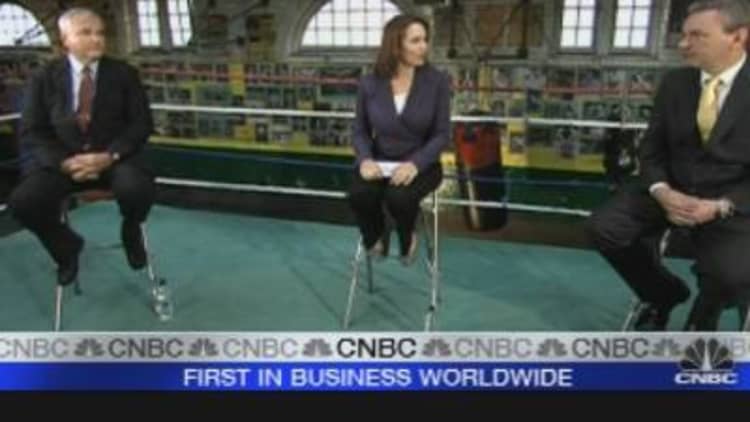Financial advisors have long recommended that investors have some precious metals in their portfolios, but years of solid gains, as well as heightened interest in inflation hedges and safe havens, have made metals more alluring than ever.
What was once a 5 percent allocation is now as much as 10 percent, with some advisors even adding rarer metals like platinum to the usual gold-and-silver mix.
UBS, for instance, is recommending top clients hold 7-10 percent of their assets in precious metals.
“Paper has counter-party risks,” says Paul Mladjenovic, author of Precious Metals Investing for Dummies. “Gold and silver are the few investments that retain value.”
Every time the gold rally appears to have peaked, another leg appears. No wonder that gold is up 379 percent over the past ten years. Private ownership stashes now exceed what’s in public gold vaults, as wealthy investors stockstock up on bars of gold during uncertain times.
In Abu Dhabi, it is as easy as using a gold ATM.
Meanwhile, silver prices have doubled in the past two years, while platinum is up 63 percent, as both metals also benefit from their growing commercial use.
“Resource scarcity is now entering our lives,” says Jim Puplava, chief executive officer of money management firm PFS Group in San Diego. “More countries are competing for precious metals, driving up prices.”
As alternative investments go, precious metals offer more than the usual ways to get in the game. There's bullion, mining companies, mutual funds, exchange traded funds, futures, coins and more.
Three Metals, Multiple Options
Many experts recommend owning the actual bullion. It’s less volatile and it’s a pure play. Puplava recommends buying American Eagle gold-bullion coins. Any bullion or coin dealer sells them.
The coins are sold at a premium of 5 percent to 10 percent above the spot gold price. They’re affordable and come in half-ounce and quarter-ounce sizes. Another option is to buy 50- to 100-ounce gold bars and store them in a vault.
“People haven’t bought so much gold since it was discovered over 5,000 years ago,” says Jeffrey Christian, managing director of CPM Group in New York City, putting the rally in perspective.
There are now more than two dozen gold ETFs traded on exchanges in various countries.
Silver's current allure has been aided by its growing industrial use. It’s the best metal for conducting heat and electricity, making it useful in electronic devices, such as cell phones.
Silver investors can opt for Silver Eagle coins or invest in theSilver Bullion Trust, which trades on the Toronto Stock Exchange and is offered by the holding companyCentral Fund of Canada.

“They buy the actual metal and put it in storage,” says Mladjenovic. “That’s a safer play.” Safer, he adds, than buying some silver or gold ETFs, which may hold futures contracts in their portfolio.
There are more than a dozen silver ETFs.
Investors can also buys shares in mining companies, such as gold producers Goldcorpand Agnico-Eagle Mines.
Finally, platinum is usually a play on a strengthening economy, as it is used in the catalytic converters in automobiles.
It’s sold as American Platinum Eagle coins and in bars, but there are only a few platinum ETFs. Two strictly for US investors—Physical Platinum and iPath DJ-UBS Platinum TR—launched earlier this year.
Puplava recommends a precious metals portfolio that is 50 percent gold, 40 percent silver and 10 percent into platinum, advocating dollar-cost averaging to compensate for some of the volatility.
“Platinum is the trickier investment of the three and silver is more volatile than gold," says Mladjenovenic. “Don’t rely on a single precious metals investment. There are so many risk factors that are political.”




